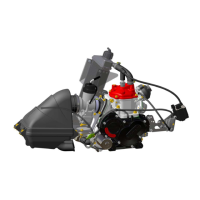
Do you have a question about the BRP Rotax 125 MAX evo and is the answer not in the manual?
Advice for best engine operation and compliance with installation.
Requirement to use only ROTAX-supplied equipment for engine operation.
Prohibition of modifications to the engine or its equipment.
Importance of consulting chassis manufacturer's information alongside engine advice.
Requirement for authorized service centers to issue an engine identity card.
RMC engines require conformity verification and sealing per technical regulations.
Instructions for installing and connecting the fuel pump assembly.
Caution against damaging the fuel hose by excessive widening.
Route fuel lines to avoid moving parts and secure on chassis tube.
Ensure fuel lines are not restricted by tie wraps to maintain flow.
Steps for fitting and connecting the carburetor.
Procedure for installing and connecting the Bowden cable.
Route Bowden cable on chassis tubes, avoiding moving parts and the track.
Steps for installing and connecting the RAVE control unit.
Ensure airflow covers the entire radiator for optimal engine cooling.
Instructions for attaching the engine using an engine pedestal.
Steps for installing the engine's wiring harness.
Instructions for installing the ECU into the battery holder.
Instructions for installing the battery into the holder.
Note on the correct orientation of battery terminals towards the control unit.
Procedure for fitting the drive chain onto the sprockets.
Steps for installing the intake silencer with integrated air filter.
Details on the front and rear mounting mechanisms for the exhaust system.
Note that exhaust system leaks can cause performance degradation.
Details and specifications for specific exhaust system configurations.
Procedure for venting the gearbox.
Warning to read the operator's manual before starting engine operation.
Detailed explanation of the engine's single-cylinder, two-stroke design.
Detailed explanation of the coolant flow and thermostat function.
Detailed explanation of the ECU's control over the ignition system.
Detailed explanation of the ERAVE system for exhaust timing control.
Information on the type of coolant and maximum temperature warning.
Information on battery capacity, lifespan, and charging advice.
Caution against using non-specified battery chargers due to potential damage.
Warnings about excessive/insufficient oil in fuel and potential engine trouble.
Critical warnings about fire hazards during fuel mixing and fueling.
Attention regarding the limited shelf life of unleaded fuel and preventing contamination.
Presentation and explanation of engine performance graphs for various models.
Steps and considerations for calibrating the carburetor for optimal performance.
Disclaimer that improper carburetor calibration voids the warranty and may cause damage.
Introduction to a smartphone application for setting ROTAX 125 Max engines.
Steps for setting up the jetting guide application using automatic features.
Steps for setting up the jetting guide application manually.
Additional notes and tips regarding the use of the jetting guide application.
Explanation of the air screw and pilot jet's role in carburetor adjustment.
Explanation of the jet needle type and its position in carburetor adjustment.
Explanation of the needle jet type and its function in carburetor adjustment.
Explanation of the main jet's role and adjustment in carburetor tuning.
Note clarifying that the carburetor does not need removal for jetting changes.
Critical warnings about fire hazards during fuel handling for jetting.
Note that drained fuel from the float chamber can be returned to the fuel tank.
Note that the main jet size is marked on its face.
Note on jet needle positions and their effect on fuel mixture.
Attention to periodic inspection and cleaning of the fuel filter.
Note on adjusting the engine's idle speed using the adjustment screw.
Note on adjusting the air-fuel mixture at idling using the adjustment screw.
Importance and selection of the correct transmission ratio for kart performance.
Principle of choosing transmission ratio for optimal engine operation within its performance curve.
Attention that higher RPM does not always guarantee better lap times; consider track conditions.
Note emphasizing the use of genuine ROTAX sprockets.
Note on using a plain bearing for the 11-tooth sprocket and its installation.
Advice to avoid 11-tooth sprockets if not necessary due to plain bearing wear.
Note on using a smaller thrust washer for the 11-tooth sprocket.
Note on the fixture's centering pins for different sprocket sizes.
Note that the plain bearing for the 11-tooth sprocket must be pressed out and renewed.
Minimum specified coolant temperature for engine operation.
Warning about exceeding maximum operating temperature and potential piston seizure.
Note on reducing radiator cooling efficiency with tape if minimum temperature isn't reached.
Note on cleaning radiator fins regularly for optimal cooling performance.
Checklist of items to verify before starting the engine.
Sequential steps to follow when starting the engine.
Note on repeating the start procedure if the engine fails to start initially.
Warning to wear appropriate protective clothing during kart operation.
Warning about touching hot engine parts and risk of burns.
Warning to avoid contact between body/clothing and moving kart components.
Procedure for stopping the engine.
Attention to check RAVE control unit for moisture after riding in rain to prevent corrosion.
Note on current consumption by the ignition system when the electric starter is active.
Detailed procedure for running in the engine after initial setup or repair.
Instruction for a richer fuel-oil mixing ratio and larger main jet during running-in.
Attention to use only fully synthetic two-stroke oil, recommending XPS Kart-TEC.
Warning against operating the engine without load, as it can shorten component lifespan.
Procedure for setting the exhaust valve timing via ECU for the 125 MAX evo.
Attention that the ground wire must remain connected for engine function.
Details for Variant 1 of exhaust valve timing setting using a battery ground connection.
Details for Variant 1, Position B, of exhaust valve timing setting.
Details for Variant 2 of exhaust valve timing setting using a starter relay connection.
Note indicating that either variant 1 or variant 2 of the wiring has been installed.
Schedule for inspection and maintenance of various engine components.
Warning that failure to follow the maintenance schedule may cause engine damage.
Maintenance schedule for the chain sprocket.
Maintenance schedule for the exhaust system.
Maintenance schedule for the intake silencer filter element.
Maintenance schedule for the fuel filter.
Maintenance schedule for the water pump.
Maintenance schedule for cooling circuit connections.
Schedule for checking and maintaining the oil level in the gear compartment.
Maintenance schedule for the drive gears of the balance shaft.
Maintenance schedule for the clutch drum bearings.
Maintenance schedule for the friction lining of the fly weights.
Maintenance schedule for the damping material in the exhaust after-muffler.
Schedule for comprehensive tear-down inspection of engine components.
Guidelines for safely transporting the kart.
Note on potential issues if transporting vertically with fuel in the carburetor.
Procedures for preserving the engine and equipment during extended storage.
Warning about potential engine damage if preservation procedures are not followed.
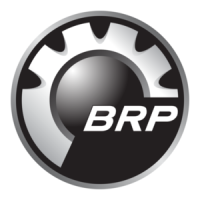
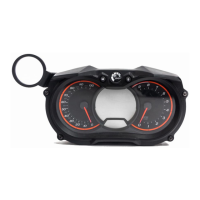
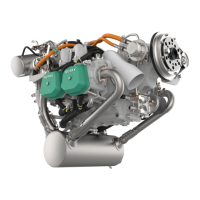




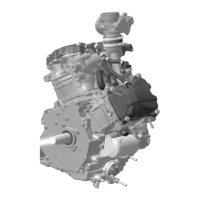


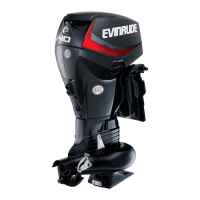

